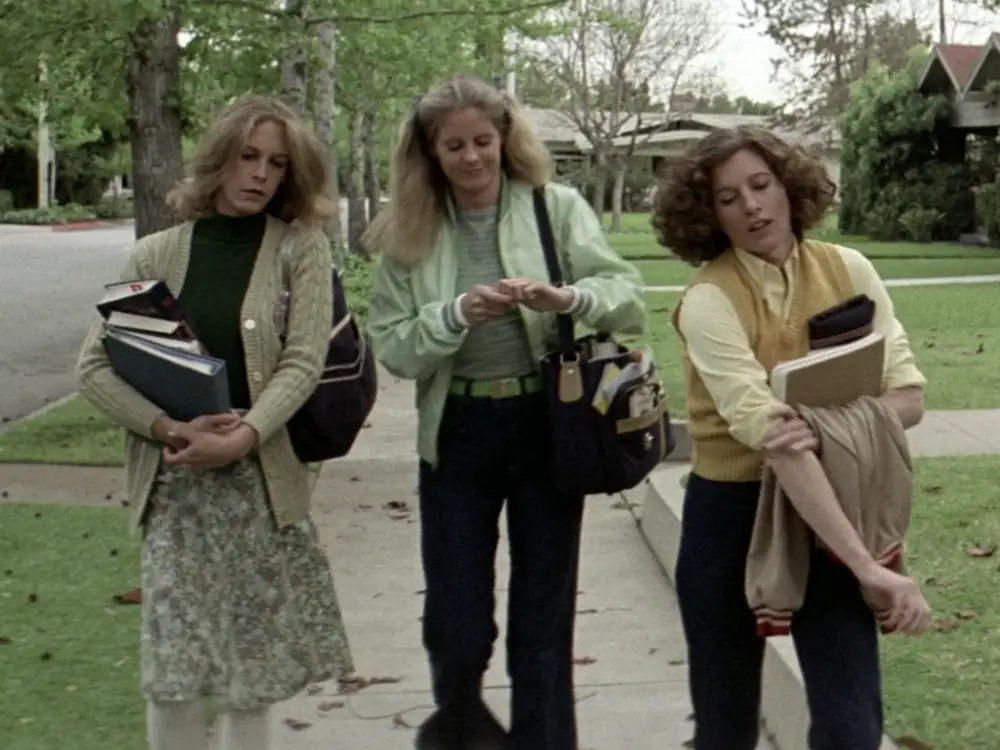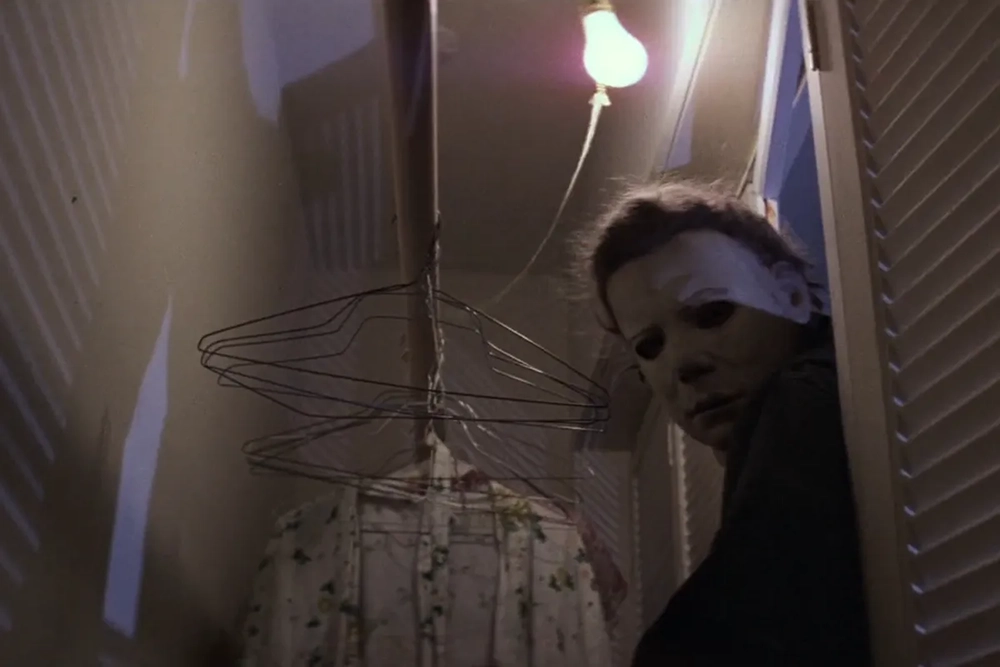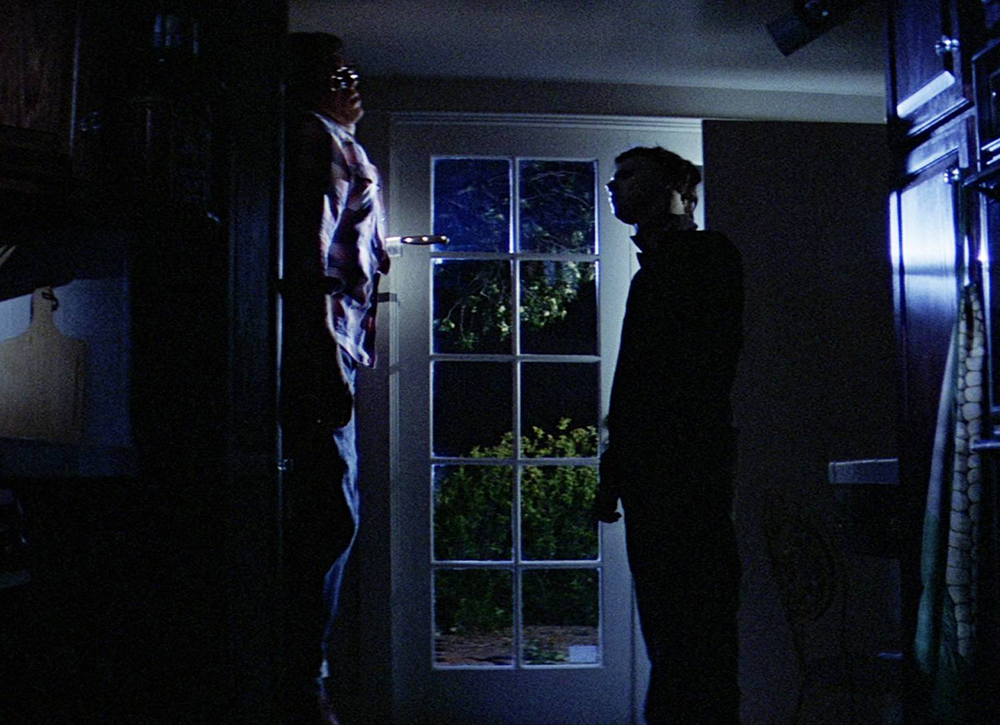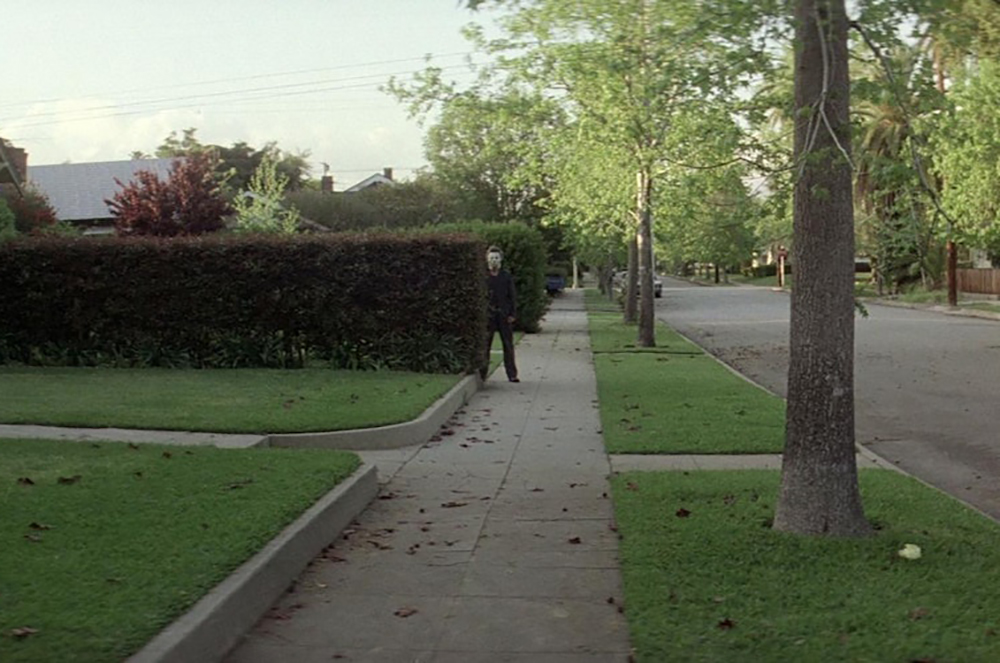“Halloween” has always been one of my favorite horror films. Michael Myers has been the subject of my nightmares for decades, a testament to how frightening the films are. I must state that even after sitting through every installation in the long line of films following the original, I don’t find any as equally horrifying. No matter the improvements in filming technology, the increased gore, or creative storylines, the 1978 directorial effort of John Carpenter stands the test of time.
Subsequent entries into the franchise pale in comparison. They lost the essence of what made the first so effective in its ability to scare and unsettle. “Halloween’s” success as a monumental moment in the horror film genre has less to do with Michael Myers than with a plot centered around the teenage relatability of Laurie strode, her friends, and the setting, located in a small, midwestern town.
‘Halloween’ Asks Us to Examine What’s Hiding in Small Town America
I grew up in a small town myself—in Northwest Indiana. I distinctly remember walking to school every day and watching the autumn leaves whirling in the slate-gray sky as the air grew crisp. Seeing Laurie Strode walk to school in her small town has always resonated with me. The town streets filled with other students in their uniforms walking to class before the bell rang at 7:45 AM, and again when classes dismissed at 3:00 PM. Like “Halloween,” a few abandoned houses lined the streets with crumbling porches and overgrown weeds. It made you stop and ask yourself, “what happened here—what is the story?”
In the same way, the legend of Michael Myers and the collective memory of him murdering his sister Judith hangs over the town like a cloud, suggesting Michael to be “The Boogy Man” himself. Plenty of the peripheral residents where I grew up had lore and mythos about their mysterious existences. These were crafted by townspeople who— purposefully or inadvertently—passed on their notions of these outlying denizens to their children, who, in turn, spread the same narratives in school or on the playground.
Also Read: Review: ‘Halloween Ends’ Will Divide Fans, but Provides the Closure the Series Needs—if You Let It
Small towns often breed big legends while paradoxically providing a false sense of security. It becomes hard to believe that any transgressions can occur due to familiarity. “Nothing bad can happen here because everyone knows each other,” you say to yourself, but it still does. A few notable crimes took place in my small town while I lived there. Mind you, nothing as gruesome as what “Halloween” depicts. However, the film seems to be very aware of our idyllic perceptions of small towns. We tend to believe that outside of urban areas, crime is nonexistent. We believe moving away from them, to the suburbs, will provide a cloister where we can find refuge from evil.
Haddonfield, a Place Where You Never Have to ‘Lock Your Doors’

“Halloween” does not take us anywhere fantastic, inner-city, or even inherently gothic in appearance. Unlike its predecessors in the horror genre, the protagonists of “Halloween” never stop at Bates Motel after a long excursion in an unknown land and see a towering, imposing home atop a spooky hill over yonder. They do not invite or conjure Satan himself like in “Rosemary’s Baby” or “The Exorcist.” Laurie and her friends are not in the open ocean, facing its unfathomable and incontrollable nature as in “Jaws.” They merely exist in an Illinois town where people feel comfortable leaving windows open and doors ajar and unlocked.
People said this where I lived as well: “This is the type of place where you never even have to lock your doors!” exclaimed a townsperson, usually after recanting an incident highlighted in the local news where locked doors would have done much to prevent disruption to the life of another. The people of Haddonfield feel safe enough to let their kids trick-or-treat unsupervised into nightfall, which “Halloween” shows several times. With Michael locked up at a sanitarium miles away, the town develops a false sense of security. The townspeople feel absolved of being confronted with inexplicable evil. That is, until it comes home, disrupting the typicality of babysitting, gossiping about boys, and making plans for school dances.
Also Read: Review: ‘Jason X’ Adds One More ‘Friday’ Film For Fans; Most Others Need Not Bother
Until now, I have not addressed that Haddonfield is fictional and that the filming of “Halloween” occurred in California. The film’s setting feels genuinely Midwestern enough to someone who grew up in Indiana—just outside Chicago—that it almost seems an insignificant detail. The realism develops further as the film focuses on a trio of teenage girls, with Laurie Strode as the protagonist. She is the first to be stalked by Michael and seems to be the only person in Haddonfield he wants to make his presence blatantly known to as he stands frozen outside, staring back at her.
Laurie and Her Friends are Relatable and Realistic
“Halloween” renders Laurie as quiet, bookish, and vulnerable. Her dynamic with her friends shows that she is more socially awkward than the other girls. She’s academic at the expense of having a romantic life, and prone to being the butt of the joke. Several scenes seem to capture Laurie in a state that gives her an air of being sensitive and perhaps longing. Most notable are the film’s scenes where she peeks through the window while she is babysitting to look across the street at the Doyle house, where she presumes her friends are engaging in hormone-fueled rendezvous with their teenage boyfriends. Laurie’s facial expressions, with the stellar acting of Jamie Lee Curtis, suggest a deep desire to be experiencing the same girlish excitement as her friends. In reality, they were meeting their demise at the hands of Michael Myers.

At times the film even feels like a sitcom. When Annie is driving with Laurie, and they ride past her dad at the recently broken-in hardware store. They scramble to hide the marijuana they’ve been smoking. It feels like a scene that could easily fit into an episode of “Three’s Company” which debuted on television only a year before. Laurie and her friends being regular teenage girls giggling and discussing their high school-aged undertakings lend a sense of relatability that ultimately makes Michael Myers much scarier. The fear of being murdered by a masked man hiding in your neighbors’ bushes is more plausible.
Is Myers ‘Evil’ Itself?
All of this culminates in a degree of poignancy that transcends time. “Halloween” doesn’t feel dated because the story and its characters apply to almost anyone who has been a high school student in the United States. We identify with Laurie and her friends. We know girls like them, and we see ourselves, our friends, and our sisters reflected by their intended familiarity. This dynamic makes the brutal deaths of Linda and Annie gut-wrenching, and this is ultimately what has us up out of our seats, screaming at the TV screen as we root for Laurie to survive—whether by crochet needle or wire hanger. We need her to escape Michael and survive his streak of murders to calm our anxiety.
“Halloween’s” scariest element is not so much that Michael Myers is some specter or shapeshifter as interpreted by the franchise’s later installations. It’s that he is a psychopath; and if his psychiatrist has any input on the matter, the embodiment of evil itself. Dr. Loomis repeatedly tries to warn those around him that Michael Myers is calculated evil, but is disregarded by those around him who cannot fathom such evil exists—possibly because Michael was a child at the time of murdering his sister Judith.
Also Read: Review: ‘Grimcutty’ YA Horror for Huluween
The first “Halloween” does Myers service in not depicting him as a nonstop killing machine as we see him in other films. Here, he chooses victims. Michael does not kill everyone in sight—Michael kills Judith, but not her boyfriend. He kills Annie but not the parents of the girl she is babysitting. We do not clearly understand his motives, intentions, or lack thereof, but I tend to prefer this. I do not think Michael needs to humanized by being a blood relation to Laurie to find him terrifying. As previously stated, Laurie being the type of character she is innately, she perfectly positions Michael to send fear into the hearts of the audience because there is an unknown element as to why he is doing what he does.
‘Halloween’ (1978) is Stripped Down to its Base Fear
Later iterations even try to depict Myers as having a connection to the occult and being controlled externally. However, this robs him of his agency. The first film suggests, at best Michael Myers is a psychopath who has shown such little regard for life that he has killed two dogs within the film. At worst, he is evil incarnate. Michael even comes to inexplicably learn how to drive a car after escaping the sanitarium, suggesting that evil will always find a way.
In either case, I find the detached yet calculated interpretation of Michael Myers the most unsettling, especially given the ending. Michael is presumed to be everywhere. This is suggested by the multiple shots of different settings within the film, his breathing heavy and hoarse. “Halloween” having a sequel was never intended, and knowing the film was supposed to be standalone makes the ending more powerful. Michael transcends a human form to become an inescapable legacy for the town of Haddonfield. Unfortunately, I think the storyline of Laurie being Michael’s sister dilutes the scariness “Halloween” works hard to create by crafting a slasher whose scariness is in full effect when shrouded in some mystery.

Laurie and the town of Haddonfield being so relatable leaves the audience with the unnerved feeling that being stalked by a masked psychopath like Michael Myers is more than a possibility. The 1978 film is a giant in the horror genre. It continues to inspire and remain impactful due to its ability to scare viewers to their core by attacking their perception of safety and what is plausible. With the actual date of Halloween approaching, along with the cinematic debut of “Halloween Ends,” announcing the end of the decades-long skirmish between Michael Meyers and Laurie Strode, I find myself reminiscing on what the franchise has meant to me.
Michael Myers—Still Haunting us 40 Years Later
I have seen Michael interpreted in many ways by the successors of “Halloween.” These do not share the same critical herald, but are enjoyable for what they are. Yet, the first “Halloween” is so gripping that I find myself revisiting it every year. The character of Laurie reappears in several of the “Halloween” sequels, while she is absent in others. Regardless of how many times I watch the film, I still see myself in Laurie. I root for her, panic for her, and hear the urgency in her voice as she bangs on the door for Tommy to open the door, Michael gaining on her with his zombified gait.
I would be lying if I told you between elementary school and up until my time in college, I didn’t hear Carpenter’s iconic score playing as I walked to class with my books in folded arms, leaves rustling at my feet. The want for Laurie to survive throughout the entirety of the film contrasted with Michael’s ability to evade even the police and commit murder after murder is its crux. “Halloween” rattles the notions of safety and security often conjured by images of small Midwestern towns. The movie makes us ask ourselves if one is not safe in a place like Haddonfield…where are they safe?
“Halloween” is available to stream or rent on most networks.
Support the Site: Consider becoming a sponsor to unlock exclusive, member-only content and help support The Movie Buff!

